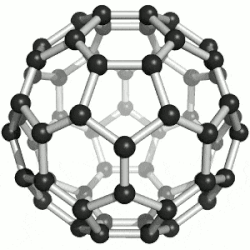Nanomedicine
Nanomedicine: Revolutionizing Healthcare at the Molecular Level[edit]

Nanomedicine, a subdiscipline of nanotechnology, is a cutting-edge field that merges the prowess of molecular science with medical application. It aims to enhance the prevention, diagnosis, and treatment of diseases by manipulating biological systems at an incredibly minute scale, using specifically designed nanodevices and nanostructures.
Overview[edit]
As advancements in nanotechnology have grown exponentially, so has its potential in the medical field. With the capability to operate at the molecular and atomic levels, nanomedicine offers new horizons in understanding, treating, and even preventing various diseases.
What is Nanotechnology?[edit]
Nanotechnology is the study and application of extremely small things, typically in the range of 1 to 100 nanometers. In this scale, materials often exhibit unique properties that are not observed in their larger counterparts.
Key Applications of Nanomedicine[edit]
Disease Prevention[edit]
Nanomedicine can be harnessed to offer solutions that actively prevent diseases. By studying the molecular mechanisms of disease progression, it's possible to design nanoscale interventions that can interrupt or reverse these processes.
Diagnostics[edit]

Nanomedicine's potential in diagnostics is profound. Nanosensors and other tools can be used to detect diseases at their earliest stages, often long before symptoms appear, leading to timely interventions and better outcomes.
Targeted Treatment[edit]
Nanomedicine allows for the precise delivery of drugs to specific cells or tissues. This targeted approach minimizes side effects and maximizes therapeutic efficacy. Nanostructures can be engineered to carry and release therapeutic agents directly to the site of pathology, ensuring minimal harm to healthy tissues.
Repair and Regeneration[edit]
With tools like nanorobots, it's possible to repair damaged tissues at the cellular level, potentially revolutionizing treatments for conditions that are currently considered irreversible.
Benefits of Nanomedicine[edit]
- Precision: Nanomedicine offers unparalleled precision in diagnosing and treating diseases, ensuring treatments are more effective and specific.
- Minimal Invasiveness: Many nanomedical procedures can be less invasive than traditional methods, reducing patient discomfort and recovery times.
- Reduction in Drug Side Effects: Targeted drug delivery means that lower doses are often required, reducing potential side effects.
Challenges and Ethical Considerations[edit]
Like all emerging fields, nanomedicine comes with its own set of challenges and ethical questions. The long-term effects of introducing nanomaterials into the human body remain a subject of research. There are also concerns regarding privacy when using nanodevices for monitoring and potential misuse in non-medical applications.
Conclusion[edit]
Nanomedicine is a testament to how technology and medicine can come together to create innovative solutions for some of the most pressing medical challenges. As research advances, it's expected that nanomedicine will play an even more pivotal role in shaping the future of healthcare.
See Also[edit]
Ad. Transform your life with W8MD's Budget GLP-1 injections from $75


W8MD offers a medical weight loss program to lose weight in Philadelphia. Our physician-supervised medical weight loss provides:
- Weight loss injections in NYC (generic and brand names):
- Zepbound / Mounjaro, Wegovy / Ozempic, Saxenda
- Most insurances accepted or discounted self-pay rates. We will obtain insurance prior authorizations if needed.
- Generic GLP1 weight loss injections from $75 for the starting dose.
- Also offer prescription weight loss medications including Phentermine, Qsymia, Diethylpropion, Contrave etc.
NYC weight loss doctor appointmentsNYC weight loss doctor appointments
Start your NYC weight loss journey today at our NYC medical weight loss and Philadelphia medical weight loss clinics.
- Call 718-946-5500 to lose weight in NYC or for medical weight loss in Philadelphia 215-676-2334.
- Tags:NYC medical weight loss, Philadelphia lose weight Zepbound NYC, Budget GLP1 weight loss injections, Wegovy Philadelphia, Wegovy NYC, Philadelphia medical weight loss, Brookly weight loss and Wegovy NYC
|
WikiMD's Wellness Encyclopedia |
| Let Food Be Thy Medicine Medicine Thy Food - Hippocrates |
Medical Disclaimer: WikiMD is not a substitute for professional medical advice. The information on WikiMD is provided as an information resource only, may be incorrect, outdated or misleading, and is not to be used or relied on for any diagnostic or treatment purposes. Please consult your health care provider before making any healthcare decisions or for guidance about a specific medical condition. WikiMD expressly disclaims responsibility, and shall have no liability, for any damages, loss, injury, or liability whatsoever suffered as a result of your reliance on the information contained in this site. By visiting this site you agree to the foregoing terms and conditions, which may from time to time be changed or supplemented by WikiMD. If you do not agree to the foregoing terms and conditions, you should not enter or use this site. See full disclaimer.
Credits:Most images are courtesy of Wikimedia commons, and templates, categories Wikipedia, licensed under CC BY SA or similar.
Translate this page: - East Asian
中文,
日本,
한국어,
South Asian
हिन्दी,
தமிழ்,
తెలుగు,
Urdu,
ಕನ್ನಡ,
Southeast Asian
Indonesian,
Vietnamese,
Thai,
မြန်မာဘာသာ,
বাংলা
European
español,
Deutsch,
français,
Greek,
português do Brasil,
polski,
română,
русский,
Nederlands,
norsk,
svenska,
suomi,
Italian
Middle Eastern & African
عربى,
Turkish,
Persian,
Hebrew,
Afrikaans,
isiZulu,
Kiswahili,
Other
Bulgarian,
Hungarian,
Czech,
Swedish,
മലയാളം,
मराठी,
ਪੰਜਾਬੀ,
ગુજરાતી,
Portuguese,
Ukrainian


